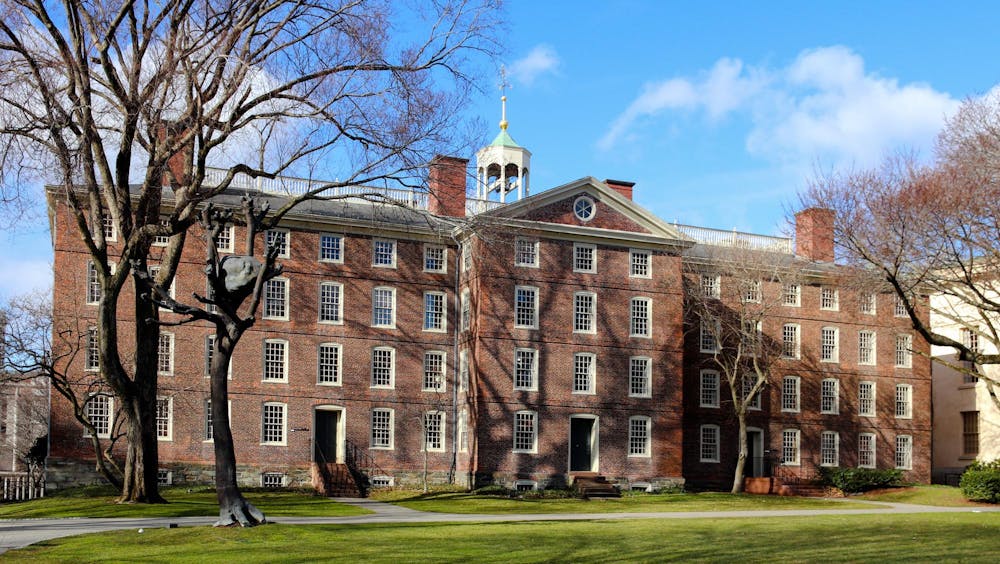As universities scramble to find alternative methods to bolster student body diversity in a post-race-conscious admissions landscape, prioritizing socioeconomic diversity has repeatedly been floated as a possible practice.
One possible fault with that plan: Many colleges, like Brown, practice need-blind admission. Under this policy, a student’s ability to pay for their Brown education is not “a determining factor in the admission decision,” according to the Office of College Admission’s website.
But outside parties have argued that need-blind admission already leaves room for colleges to consider income in admissions.
On one end of the spectrum, a lawsuit brought against Brown and a collection of other high-ranking universities argues that the colleges never practiced need-blind admissions in the first place. In Brown’s case specifically, it argues that the University’s alleged preference for the children of donors violates the premise of need-blind admissions.
And on the other end, advocates for equity in admission told The Herald that the University’s definition of need-blind leaves room for low-income students to receive preferential treatment.
Need-blind policies have “never been interpreted as not being able to take a student’s (economic) situation into account,” said Catharine Hill, managing director of Ithaka S+R — a consulting firm that provides strategic advising to collegiate administrations and runs a coalition for college access that Brown belongs to.
The University, responding to multiple requests for comment, did not directly address whether its need-blind policy leaves the door open for applicant preference based on socioeconomic status.
Brown has maintained a need-blind admissions procedure for first-year, domestic applicants since 2003. The Office of College Admission never has access to an applicant’s financial aid application, Associate Provost for Enrollment and Dean of Undergraduate Admission Logan Powell wrote in an email to The Herald. Instead, that is handled by the Office of Financial Aid.
But even without a financial aid application to reference, admission officers can still glean an applicant’s financial background, Hill said. Admission officers can look at an applicant’s first-generation status, familial education history and high school information during the holistic review process.
With these context clues, schools with need-blind policies “don’t really need” an applicant’s financial aid application “to know whether a student is low-income or not,” Hill added. Low-income status has equated to a “plus factor” for 20 years, Hill said.
That practice is “consistent with claiming to be need-blind,” she added. The two concepts only come into conflict if universities reject students on the basis of having financial need that they detect outside.
When asked about the current use of need-blind admission, University Spokesperson Brian Clark wrote that “a student’s ability or inability to pay the cost of tuition is never a disadvantage in our admissions process.
Neither Powell nor Clark directly addressed whether low-income applicants could have an advantage in the admissions process.
“We recruit and admit students based on a broad range of factors,” Powell wrote in an email to The Herald, highlighting recruitment efforts targeting “first-generation students, students from rural backgrounds, student veterans, students who work with community based organizations” and students from Providence Public Schools and the Community College of Rhode Island.
Clark also wrote that the socioeconomic diversity of incoming classes has grown over time, due to “pathway programs, targeted outreach and pipeline programs” as well as “generous financial aid” packages.
Another interpretation of need-blind admissions, articulated in a class-action lawsuit brought against Brown, argues that the University’s need-blind admission policy does not meet a standard previously set in federal law.
Under the Improving America’s School Act of 1994, “need-blind” is defined as an admission process “without regard to the financial circumstances of the student involved or the student’s family” — either as an advantage or disadvantage.
By giving preference to the children of donors, the University failed to practice need-blind admission, the lawsuit alleges. Its alleged failure to practice need-blind admission meant that the University should not have had access to an antitrust exemption which allowed Brown to participate in a group of colleges that share financial aid methodology from 1998 to 2012, the lawsuit alleges.
The University has repeatedly denied these allegations. At the time the lawsuit was filed, Clark wrote that Brown makes “admission decisions for U.S. undergraduate applicants independent of ability to pay tuition,” The Herald previously reported.
Brown and its co-defendants argue that they implemented need-blind policies to prohibit admission officers from “disfavoring applicants because they need financial aid,” according to court documents.
Brown ranks 230th of 283 colleges surveyed in economic diversity via Pell Grant eligibility — the lowest in the Ivy League, according to data compiled from The New York Times. A recent study co-authored by Professor of Economics John Friedman also indicates that high-income students are overrepresented at top American colleges, including Brown.
In a coming report, an ad-hoc committee will examine the impact of legacy admission, test-optional policies and early decision to ensure the University’s admissions policies “align with Brown’s stated commitments to excellence, access and diversity,” according to a University news release. That committee leaves room for other recommendations, too: It can levy “additional recommendations that are consistent with Brown’s commitments and support our educational mission.”
Richard Kahlenberg, a senior fellow at the Progressive Policy Institute, has expressed hopes that universities will begin explicitly using class as a consideration in admissions by using low-income indicators to implement class-based affirmative action. The practice expressly gives preference to applicants from lower-income households as a way of increasing socioeconomic and racial diversity.
Since “a disproportionate share of economically disadvantaged students are Black and Hispanic,” these policies may bolster the racial diversity of incoming cohorts, he wrote in an email to The Herald.
But “a university would have to put clear guardrails in place to instruct admissions officers to only use socioeconomic status as a plus factor, not a negative, for disadvantaged students,” Kahlenberg wrote.

Owen Dahlkamp is the managing editor of newsroom on The Herald's 135th Editorial Board, overseeing the paper's news operations. Hailing from San Diego, CA, he is concentrating in Political Science and Cognitive Neuroscience with an interest in data analytics. In his free time, you can find him making spreadsheets at Coffee Exchange.





